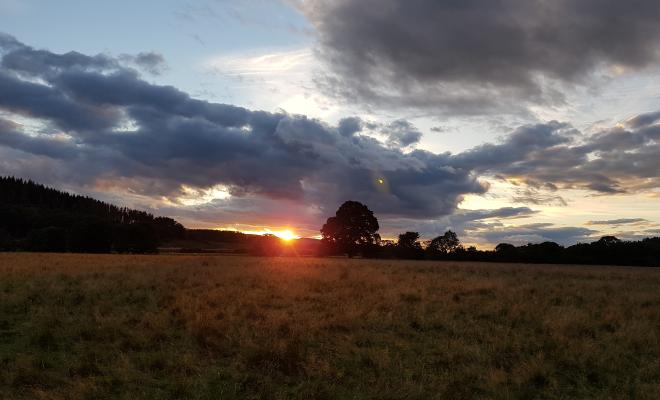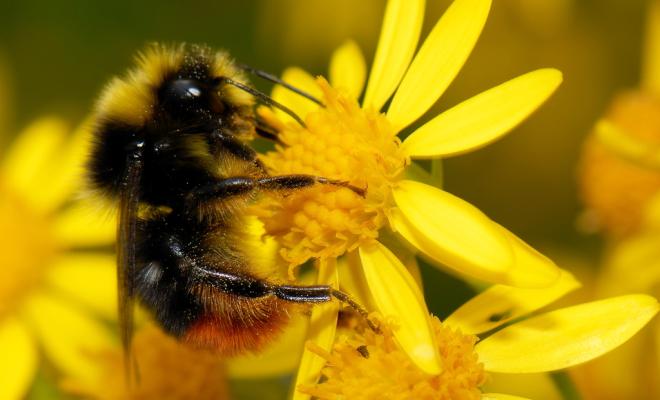Paul de Zylva20 Jul 2022
Cast your mind back to 6 May 2019. That was the day Prince Harry and the Duchess of Sussex’s baby Archie was born, and the day on which the world’s nature scientists predicted the kind of nature-depleted world Archie and billions of others will live in.
The scientists implored governments to avoid such a bleak outlook by leading nature’s revival.
The Global Assessment of the state of the planet’s biodiversity and ecosystems is not just another expert report documenting nature’s decline. It's THE definitive scientific analysis for the 21st century and THE manual for governments, businesses and civil society to use to get out of trouble.
The Assessment is required reading for every serious politician, business or civic leader. It was also the third major warning within a year to present evidence and implications of our deteriorating natural world.
In 2018, the Intergovernmental Science-Policy Platform on Biodiversity and Ecosystem Services (IPBES) also assessed how land is being degraded worldwide.
And in 2019 the United Nations reported on how insensitive farming is harming nature in ways which undermine our very ability to produce food.
Along with climate warnings, these three landmark studies are THE ultimate test of democracy, leadership and of the market economy.
Here I explain how each of the reports point to the disturbing disappearance of nature - we can’t say we weren’t warned - and how governments, businesses and society can reverse the trends.
The 2019 IPBES Global Assessment on Biodiversity
The IPBES Global Assessment is not the first warning to governments. But it is the largest study of its kind since governments were presented with the Millennium Ecosystem Assessment (MEA) in 2005.1
The MEA advised governments that a third of the world’s natural life-support ecosystems have been eroded. That is like going into a shop to find a third of the stock missing from the shelves. And that was in 2005.
Now, for the IPBES Global Assessment in 2019, 455 experts from 50 countries spent three years examining 15,000 scientific studies and other evidence.
They assessed how humans have damaged the planet over the past half century and forecasted the implications for life on earth to come.2
The headline finding? Around 1 million wild animal and plant species now face extinction, many within decades – more than ever before in human history – with grave implications for life on earth.
Ecosystems, species, wild populations, local varieties and breeds of domesticated plants and animals are shrinking, deteriorating or vanishing. The essential, interconnected web of life on Earth is getting smaller and increasingly frayed. This loss is a direct result of human activity and constitutes a direct threat to human well-being in all regions of the world.
Professor Josef Settele, co-chair of the IPBES Global Assessment
The study identified the 5 main culprits driving the damage to nature and our existence. In order these are:
1. Changes in land and sea use
It’s a classic case of a rising line on a graph (demand for land, materials and so on) crossing with a declining line (less capacity and less of what is sought).
A surge in demand for food, energy and materials like timber, rubber and leather especially since the 1970’s – is running counter to a diminishing ability of land and seas to support these multiple demands.
Reasons include reduced soil quality, a lack of pollinators and loss of coastal habitats and coral reefs.
2. Straight exploitation of organisms
This means exploiting nature especially by the logging of forests, the hunting of wild and often threatened species and the over-exploitation of fish, shellfish and other marine organisms.
3. Climate change
Human-induced climate change is making previously benign habitats inhospitable to species. For example, the warming of the oceans is causing sensitive coral reefs to die off leaving countless species homeless and the oceans too acidic to live in.
The interaction of climate change and nature’s decline is double trouble and they are not separate issues.
4. Pollution
Natural environments globally are being degraded by air, water and soil pollution from industrial processes, waste dumping and the rising tide of plastics in soils, rivers and oceans.
5. Invasive species
Almost a fifth of the planet’s surface is at risk from the spread of plants and creatures away from their normal area, including through global trade and deliberate introductions, to new areas where they disrupt habitats, species and ecosystems.
For me, the most startling conclusion is that nature’s decline is now detracting from governments’ economic, security and social aims.
The evidence is that the decline of biodiversity and ecosystems is undermining other aims and spending including work to address poverty and hunger.
Put another way, governments’ efforts to improve human health, to ensure plentiful, nutritious food and clean and reliable water and to deal with hunger and poverty are at risk because the natural web of life support systems we need to meet basic needs, and which can help, are being run down.
The IPBES says that 80% of the Sustainable Development Goals (SDGs) – set by world governments as recently as 2015 to improve people’s health, to secure water supplies, to improve life in cities and more – are being thwarted by deteriorating nature.
Although current action to protect and restore nature is inadequate and governments’ responses to previous warnings has been insufficient, the IPBES says there IS still time IF all governments lead, including overcoming opposition from vested interests.
The IPBES urges governments to lead the kind of transformative change needed to restore and protect nature for the common public good. I expand on this below.
The 2018 IPBES report on land degradation
The IPBES’s 2018 study of land degradation was the world’s first comprehensive evidence-based assessment of land degradation and its effects.3
Land degradation includes deforestation, the loss of soil and the abandonment of land and leads to declining habitats and populations of wild species and reduced quality of soils and fresh water.
The assessment is that human activity is degrading land so much that the wellbeing of 3.2 billion people – two-fifths of the world’s population – is being undermined.
Combined with species extinctions and the growing effects of climate change, degraded land is now driving human migration and raising risks of conflict. The financial cost of land degradation was put at about 10% of the world’s annual gross product in 2010.
The IPBES identified agriculture, lifestyle and consumption patterns, climate change as the lead causes of land degradation.
Unsustainable agriculture
Unsustainable cropping and grazing is described as “the most extensive global direct driver of land degradation” causing both significant loss of biodiversity and the decline of the world’s ecosystem services.
The study said that food security, water purification, the provision of energy and “other contributions of nature essential to people... has reached "critical" levels in many parts of the world.”
On the role of agriculture in land degradation, the IPBES reported that more than 1.5 billion hectares of natural ecosystems had been converted to croplands by 2014 so that crop and grazing lands now cover more than one third of the Earth’s land surface.
The surge in unsustainable agriculture means that the most recent clearances of native habitats, including forests, grasslands and wetlands, are being concentrated in some of the world’s nature hotspots – the most species-rich ecosystems on the planet.
The problem is compounded by rising demand for food and biofuels which is likely to lead to increases in nutrient and chemical inputs and a shift towards industrialized livestock production systems, with pesticide and fertilizer use expected to double by 2050, the IPBES said. Also see the UN report on biodiversity and food security listed below.
High maintenance lifestyles
High-maintenance lifestyles are also driving the unsustainable levels of agricultural expansion, natural resource and mineral extraction and depletion mentioned throughout the report and this article.
Current patterns of urbanisation involve both harmful physical development which mistreats land and nature, and economic activities which are locked into a constant cycle of demanding resources from outside to satisfy high-consumption living by growing populations aspiring to consume at certain levels.
Such unsustainable consumption and lifestyle patters are happening in both the most developed economies and because of rising consumption in developing and emerging economies.
Climate change
Lastly, the assessment found that degraded land is a major contributor to climate change because, for example, where land is degraded carbon is released instead of being locked up in soil.
The report found that deforestation alone contributes about 10% of all human-induced greenhouse gas emissions and that land degradation between 2000 and 2009 was alone responsible for annual global emissions of up to 4.4 billion tonnes of CO2.
Given the importance of soil’s role in absorbing and storing carbon, the avoidance, reduction and reversal of land degradation could provide more than a third of the most cost-effective actions needed by 2030 to keep global warming at levels agreed by the Paris Agreement on climate change.
Restoring land and soils would also increase food and water security and help avoid conflict and mass migration caused by environmental decline.
Summing up how these major issues need to be tackled together not be treated as separate concerns, Sir Robert Watson, Chair of IPBES, said:
Through this (land degradation) report, the global community of experts has delivered a frank and urgent warning, with clear options to address dire environmental damage.
“Land degradation, biodiversity loss and climate change are three different faces of the same central challenge: the increasingly dangerous impact of our choices on the health of our natural environment. We cannot afford to tackle any one of these three threats in isolation – they each deserve the highest policy priority and must be addressed together.
The 2019 UN FAO report on biodiversity and food security
It is ironical that nature is in decline in large part because of how we farm and that nature is now biting back by undermining our ability to produce food.
The United Nations’ Food and Agriculture Organisation (FAO) has recognised a vicious cycle in its 2019 report on how declining nature, biodiversity and ecosystems are now undermining our food security.4
The FAO says that the natural elements needed to produce plentiful nutritious, healthy food for all is being eroded including the diversity of plant and animal species the world’s hungry population needs as food production narrows down the species it wishes to market:
“Many key components of biodiversity for food and agriculture at genetic, species and ecosystem levels are in decline. The proportion of livestock breeds at risk of extinction is increasing. Overall, the diversity of crops present in farmers’ fields has declined and threats to crop diversity are increasing.”
Graziano da Silva, FAO Director General, said:
“The foundations of our food systems are being undermined… Parts of the global report make sombre reading. It is deeply concerning that in so many production systems in so many countries, biodiversity for food and agriculture and the ecosystem services it provides are reported to be in decline.”
What needs to happen?
The three warnings do not represent a mild crisis to be addressed by tinkering at the edges; they are about maintaining and saving life on earth and retaining the many benefits humans currently derive from thriving nature and intact, fully functioning ecosystems.
Poor governance, bad government and business as usual are no longer viable.
Governments must:
Be joined up. Every part of every government must buy-in to restoring our nature and stabilising our climate. Governments must cease seeing our environment as separate from their other aims and priorities.
It is no longer tenable, nor a sign of good governance, to pursue economic and social policies as though they are separate from securing a safe stable environment.
Joined-up government also means suspending activities and spending which contradict and undermine what is needed to restore nature and protect our climate.
Restore nature. Switch investments, public spending and rules away from propping up unsustainable intensive agriculture and carbon intensive sectors to an intensive land-to-sea plan to restore nature nationwide.
Face up to lobbying. Resist lobbying by businesses, financiers and vested interests that are driving and perpetuating the problem. Too many governments remain complicit in nature’s decline and climate instability by being receptive to lobbying for narrow interests not the common good.
Every business in all economic sectors must:
Turn talk into action. Business needs to operate within society’s needs for a safe stable and nature-rich planet, not operate separately from that.
Excellent analysis and talk by business-led bodies such as the World Economic Forum (WEF) and others has to start meaning something.
Be accountable. Business must be held accountable for decisions, investments, supply chains and lobbying activity which perpetuates nature’s decline and guarantees climate chaos.
Businesses' social license to operate is now under scrutiny and is on the line.
Change business practice. Every business in every sector must play its part and be supported to do so by business organisations providing the support, advice and reporting on businesses and sectors which block or undermine progress.
Governments and business must stop being making it hard for people to do the right thing. They must remove the barriers to people whether as individuals at home, at work, in their communities and as consumers, to act, to make informed good choices the norm and to know their role in keeping our planet viable.
The scientists’ warnings are the ultimate test of democracy, of leadership and of the market economy.
- 1Millennium Ecosystem Assessment, 2005 www.millenniumassessment.org/en/Synthesis.aspx
- 2IPBES, Global Assessment, 2019 www.ipbes.net/news/ipbes-global-assessment-summary-policymakers-pdf
- 3IPBES, Assessment Report on Land Degradation and Restoration, 2018 www.ipbes.net/assessment-reports/ldr
- 4Food and Agriculture Organisation of the United Nations, The State of the World’s Biodiversity for Food and Agriculture, 2019 www.fao.org/state-of-biodiversity-for-food-agriculture/en/




